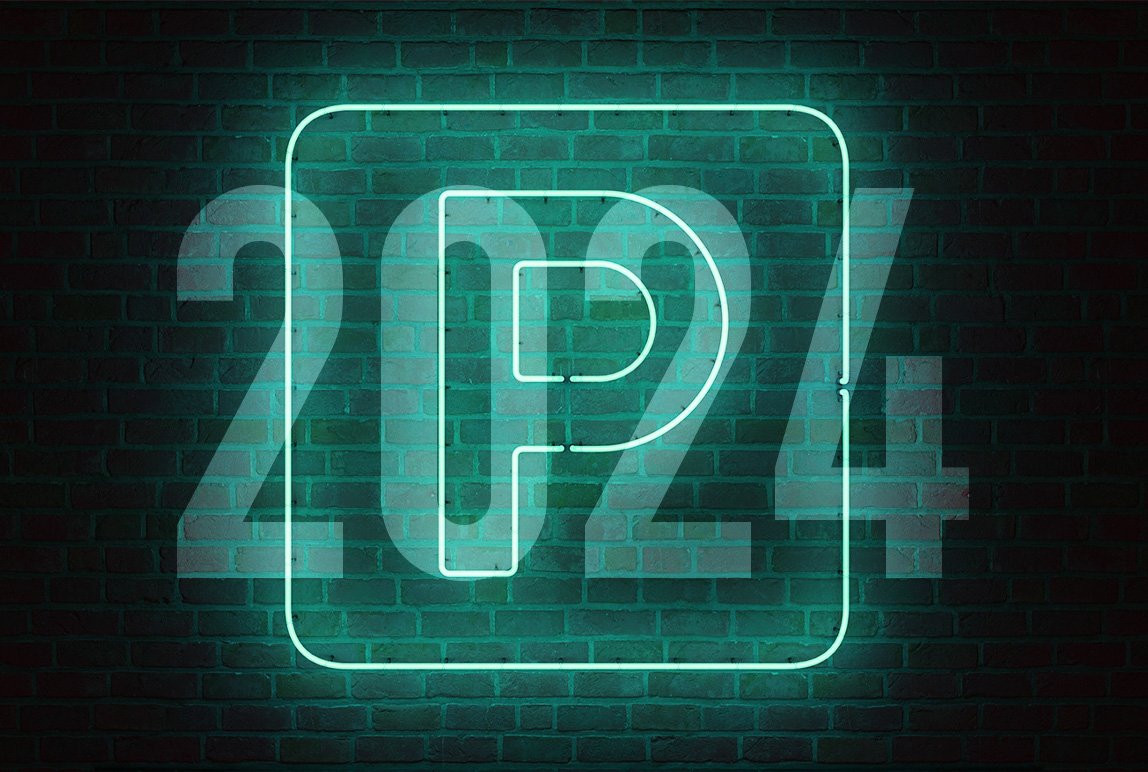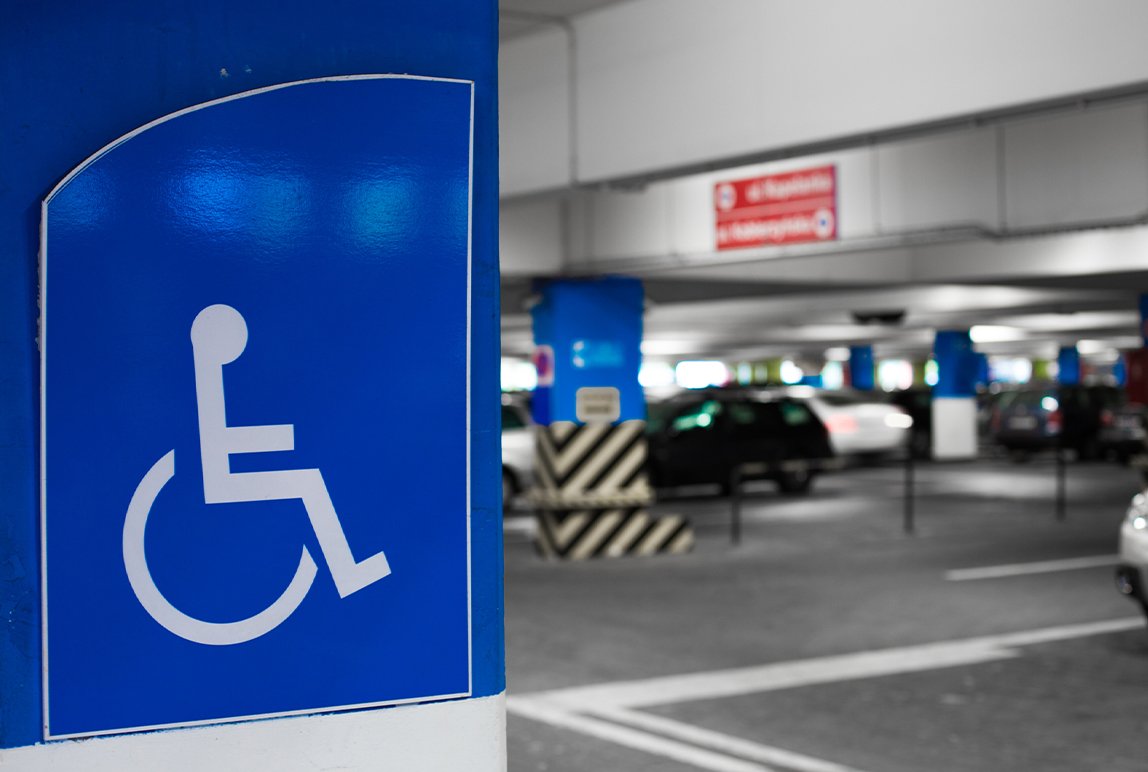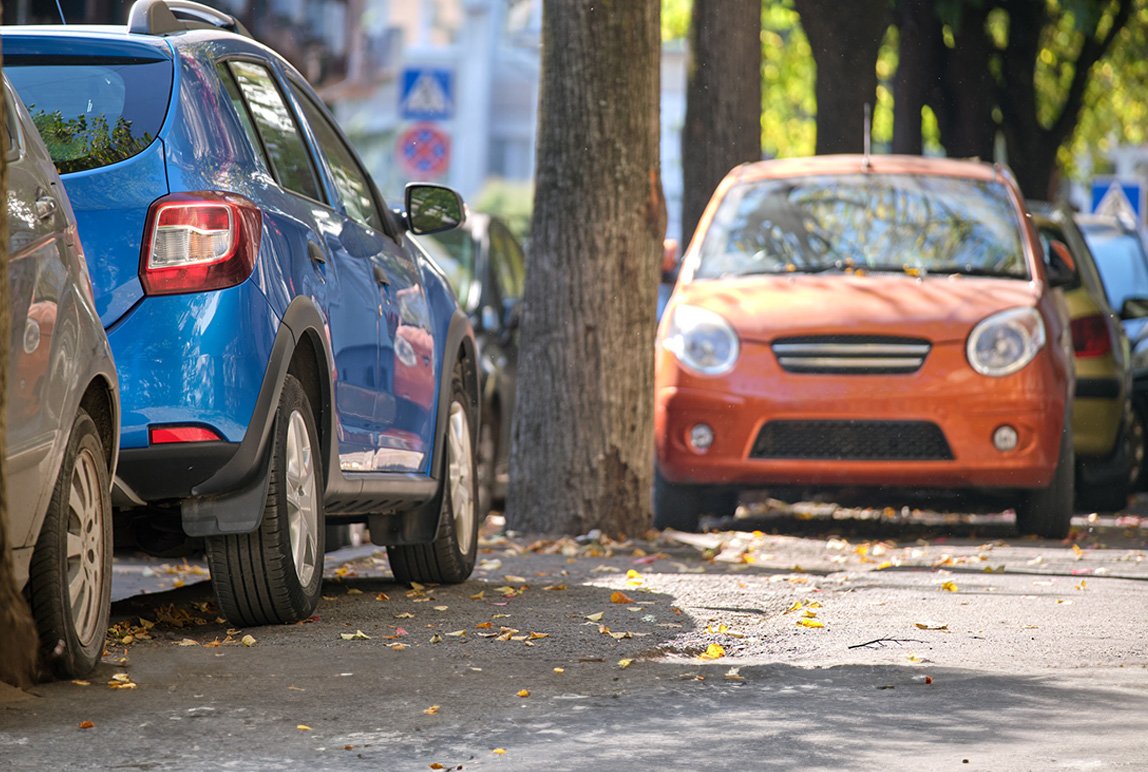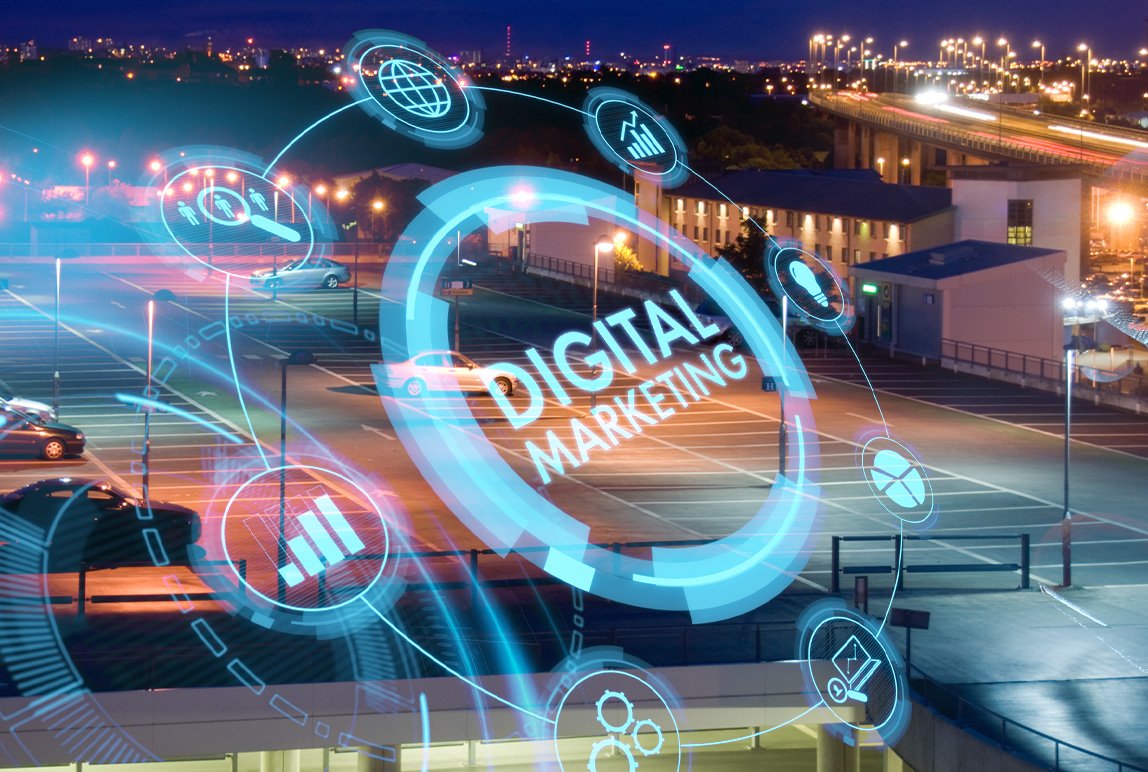Glossary: Top Parking & Mobility Industry Terms You Need to Know in 2024
Posted: Jan, 16, 2024 9:53AM ET • 35 min read
Navigating the dynamic landscape of the parking and mobility industry can be a daunting task, especially for newcomers and enthusiasts looking to deepen their understanding. Whether you are a parking facility manager, owner, or operator it is important to stay abreast of trends and the key terms that shape the industry. Luckily, the below glossary will help demystify the jargon inherent in this ever-evolving sector.
Access Control System (ACS) — A gated system consisting of several hardware and software components that control access to parking facilities.
Alarms — System-generated messages that indicate potential maintenance needs or technical issues with parking equipment (e.g., paper refill required or no communication).
Alternate Side Parking — A traffic regulation that prohibits cars from parking on one side of the street between certain hours of the day.
Artificial Intelligence (AI) — Machine learning that uses algorithms to create predictions for parking operation optimizations, such as predicting when and where the highest number of violations occur, showing available parking spots, or projecting peak times. Identified by PwC as one of the “Essential Eight” technologies that are expected to interact with and amplify each other in the coming years, AI presents new and as-yet untapped potential for technological advancement and opportunities to innovate.
Augmented Reality (AR) — Information relevant to the user overlayed onto their perceived environment, such as navigation instructions displayed in drivers’ line of sight by projecting directional arrows onto roadways, availability markers within parking bays, etc. Identified by PwC as one of the “Essential Eight” technologies that are expected to interact with and amplify each other in the coming years, AR presents new and as-yet untapped potential for technological advancement and opportunities to innovate.
Automatic Parking System — A mechanical system designed to maximize space for parking. The system uses a system of elevators that automatically transport cars to and from parking spaces across multiple levels, stacking them vertically to minimize land usage.
Automation — Systems and technologies deployed to reduce manual interventions, streamline processes, and deliver efficiencies. Automation within a parking facility can increase throughput an entry and exit, accelerate payment processes, optimize space allocation, and enhance security measures.
Barcode Scanner — A device that captures and decodes information contained in a barcode.
Blockchain — A digital way of recording and confirming transactions and smart contracts, including permitted parking credentials. Identified by PwC as one of the “Essential Eight” technologies that are expected to interact with and amplify each other in the coming years, blockchain presents new and as-yet untapped potential for technological advancement and opportunities to innovate.
Bluetooth Low Energy (BLE) Permit — A parking permit stored on a user’s smartphone and transmitted to a BLE reader using the smartphone’s integrated Bluetooth antenna. Digital parking credentials of this type are becoming increasingly popular as the market moves toward hands-free and touchless solutions.
Bluetooth Low Energy (BLE) Reader — An electronic reader that lets users present their parking access credential via their Bluetooth-enabled smartphone or wearable technology, opening the facility’s barrier gate to allow ingress or egress for the verified user.
Bulk Permits — A stack of permits purchased all at once; for example, a department or office may purchase bulk permits to distribute to its guests for a special event.
Cashless Solution — Payments made without coin or bank notes, but instead in the form of electronic payments, such as credit card, debit, mobile wallets, and payment apps.
Centralized Support Services — Supporting multiple aspects of a business in one facility, often to improve speed, efficiency, and security.
Certified Banking Platform — Secure transaction processes integrated into parking equipment that follow the Payment Card Industry (PCI) security standards.
Chip and PIN — A payment method that relies on an embedded chip in a payment card to be inserted into an EMV-certified payment device and requiring users to enter a personal identification number to approve a payment transaction.
Cloud-based — A service, application, or infrastructure hosted on a third-party virtual machine or data centre. Cloud computing lets the user reduce or eliminate hardware and software requirements by purchasing it as an on-demand service accessible via the internet.
Conversational Artificial Intelligence (AI) — Natural Language Processing (NLP) and Large Language Models (LLMs) enable computers to understand, interpret, and respond to human language in a way that mimics natural conversation. Seamless and context-aware Conversational AI has the potential to give your users instant and personalized assistance for an ever-increasing number of customer service scenarios — without the burden of dedicated staff to field each inquiry. This empowers parking operators to more efficiently allocate their resources and improve customer satisfaction by reducing issue resolution times.
Construction Services — The design and logistics for parking lot construction, including lighting, curbs, and sidewalks, parking infrastructure, as well as wayfinding and custom signage.
Contactless Payments — Credit and debit cards, key fobs, smart cards, or other devices that use radio frequency identification (RFID) for making secure payments. The embedded chip and antenna let a customer complete a transaction by waving, tapping, or bringing their card or fob close to the reader at the point of sale.
Controlled Access Parking — A parking facility with a system of hardware and software that controls access to facilities using gates.
CSAE Audited — The Canadian Standard on Assurance Engagements (CSAE) addresses audit engagements undertaken by a service auditor to report on controls at organizations that provide services to user entities when those controls are likely to be relevant to user entities' internal control over financial reporting.
Curbside Management — The collection of operating concepts, techniques, and practices that empower organizations to effectively allocate and monetize the use of their curbs and other high-demand areas.
Curb Monetization — A curbside management technique that manages demand for parking at the curbside by monetizing access to it, based on the parking operator’s business objectives as well as market research on consumer tolerance for fees. As consumer preferences lean increasingly toward the convenience of ride-sharing programs and technology makes autonomous vehicles a growing likelihood, parking operators can expect to have to manage driverless pick-up and drop-off scenarios in the coming years.
Dashboard Analytics — A web-based page on which real-time information is collated from various sources. The metaphor of a dashboard is adopted to emphasize the nature of the data being displayed on the page; it offers real-time analysis of how a business is operating.
Digital Parking Permit — A parking permit that leverages electronic credentials to grant entry and exit from a parking facility. These can include traditional physical media like HID access cards and mobile-friendly options like QR codes displayed on a smartphone, but hands-free options continue to grow in popularity; depending on a facility’s specific business needs and customer use cases, available hands-free options may include Bluetooth Low Energy (BLE) permits associated with a permitholder’s smartphone or automatic vehicle identification (AVI) technology like license plate recognition or radio frequency transponders.
Drones — Driverless or pilotless vehicles that can be controlled either remotely by an operator or completely autonomously by onboard computers and artificial intelligence. Identified by PwC as one of the “Essential Eight” technologies that are expected to interact with and amplify each other in the coming years, drones present new and as-yet untapped potential for technological advancement and opportunities to innovate.
Dynamic Pricing — Parking rates that fluctuate based on demand for parking in a location and the supply of available parking spaces, often with the aid of parking guidance systems that actively monitor the status of each parking stall to provide real-time availability status.
Electrification — An important part of a broader strategy to reduce our reliance on fossil fuels in both transportation and the wider economy at large in favour of electricity as a power source. Parking operations play a growing role in the electrification of mobility by accommodating electric vehicles with supporting infrastructure, such as charging stations. Parking operators have an opportunity to incentivize sustainable mobility practices by offering EVs preferential rates or other loyalty programs as part of their corporate social responsibility initiatives as well as to drive volumes and thereby revenues.
EMV (Europay MasterCard Visa) — A global standard for interoperation of integrated circuit cards (IC cards or chip cards) and IC card-capable point-of-sale (POS) terminals and automated teller machines (ATMs), for authenticating credit and debit card transactions. EMV chip cards contain embedded microprocessors that provide strong transaction security features not possible with magnetic stripe cards.
Entry Gate — A barrier arm placed at the entrance of a parking lot designed to control the flow of vehicles entering a parking facility.
Ethernet — A type of networking technology. An Ethernet cable is a type of connection that’s very commonly used for communication between various pieces of hardware, such as between a computer and a router, switch, handheld ticket-writer’s downloading cradle, etc.
Event Parking — Parking associated with a special event with resources allocated to it, such as a sports game, city event, or other activity or meeting, that is finite in duration and requires its own dedicated inventory, unique pricing, or both.
Exit Gate — A barrier arm placed at the exit of a parking lot designed to control the flow of vehicles exiting a parking facility.
Financial Compliance — Compliance with the laws and norms that regulate financial transactions, ensuring accuracy in reporting and the operational transparency your clients and customers expect. It’s incumbent on organizations of any size — and each of the individuals employed by them — to conduct their operations to the very highest industry standards.
Financial Services — Secure revenue processing for customer transactions — including administration of cash and coin, and credit and debit card payments — offered by a parking vendor.
Frictionless Parking — A combination of technology and management solutions that makes for an easy, hands-free parking experience from start to finish.
Full-service Parking Solution — A solution offered by a parking equipment and services provider that encompasses all aspects of the parking operation, such as parking management services, parking equipment, technology innovations, construction, facility maintenance, and revenue processing services.
Gate — Also commonly referred to as a barrier, a gate is a piece of hardware used to control access to and from a parking facility.
Gated Parking System — Also known as a Parking Access Revenue Control System (PARCS), a gated parking system uses physical barriers to control access to and from the parking facility in such a way as to force drivers to pay for their parking sessions. Gated systems also include pay stations that can be placed at various points throughout your property (inside or outside) for drivers to purchase parking passes or pay for their parking session before exiting the lot.
Generative Artificial Intelligence (AI) — Sophisticated algorithms and machine learning analyze data for patterns within its structure then use it to generate new content with similar characteristics. GenAI can assist parking operators in developing parking application UX and UI, generating customer-facing documentation and other content, and anticipating hardware failures before they occur to maximize overall system uptime and minimize operational overhead.
Grace Period — The period within which customers can exit a parking facility without having paid; the time is generally customizable and is offered as a goodwill gesture to patrons who may have, for example, entered a parking facility in error Regular rates apply after the grace period has lapsed.
Hands-free Permit — A parking permit that lets users enter and exit a facility without having to directly interact with a piece of technology, letting their credential be read passively. These permits can take the form of Bluetooth Low Energy on users’ smartphones, automatic license plate recognition technology, radio transponders fitting to permitted vehicles, or any number of other technologies as the market continues to evolve.
Intelligent Mobility — Smart technology integrations designed to optimize how parking and transportation equipment is powered, used, and connected in the easiest and most efficient and environmentally friendly way.
Internet of Things (IoT) —A network of connected devices — whether they’re mobile or fixed in place — that leverage sensors, software, and a connection to the internet to allow for remote monitoring and control. Increasingly, people’s own private vehicles are becoming part of the Internet of Things; today, this comprises over-the-air software updates, but in the near future, we can expect vehicle detection systems to capitalize on integrations with smart buildings to trigger a number of other processes — anything from customized greetings at the facility entrance to setting the thermostat in their home or office. Identified by PwC as one of the “Essential Eight” technologies that are expected to interact with and amplify each other in the coming years, IoT presents new and as-yet untapped potential for technological advancement and opportunities to innovate.
Lease Agreement — A month-to-month payment arrangement with a parking vendor to supply parking equipment and/or management services.
License Plate Recognition (LPR) — A vehicle identification technology that uses cameras to take pictures of license plates, and convert the images into text that a computer can use. LPR systems are commonly integrated with PARCS systems.
Live Central Monitoring — A centralized support facility — generally staffed 24/7/365 — that monitors the real-time performance of a parking operation and the technology within it while also providing remote customer assistance.
Local-SEO — A search engine optimization (SEO) technique that makes business locations more visible and/or rank highly in local results on search engines like Google.
Loyalty Program — An incentive program that lets customers collect points for each parking transaction and redeem them for future parking sessions. Loyalty programs are increasingly popular in the highly competitive markets of downtown cores where consumers have a number of parking options near their final destination and parking operators are competing for consumers’ business.
Metaverse – A relatively new concept in thinking about the way people create their environment and interact with it and within it. This convergence of our physical and digital worlds — created by adding immersive, three-dimensional layers to the web — fosters online interactions to build communities that could never have existed before. The augmented reality and virtual reality components of the metaverse are today playing a growing role in the way we design our urban spaces, including how vehicles move through parking environments to prioritize pedestrian safety and how people interact with the technology located within the facility.
Mobile Parking or Pay-by-mobile — A type of parking operation that enables a customer to pay for parking using an application on their smartphone.
Mobility-as-a-Service (MaaS) — Part of a shift in consumer preferences from personally owned resources toward on-demand services as and when needed, for example those living close to the amenities they need downtown but renting a car for out-of-town trips. This has more recently been reconceptualized as a more comprehensive and digitally integrated that lets users plan, book, and pay for the mobility services they need, ensuring they always have the right travel mode for their specific travel need — all with a single account. In practical terms, a customer’s door-to-door mobility solution can include public transit, ride-hailing services, bike-sharing, or any number of other modes.
Monitoring System — A system that allows the user to view system-generated activity, alarms, and occupancy levels within a facility via the PARCS system. Some systems can be configured to push certain notifications to facility management via email or SMS.
Monthly Parking — A purchased parking permit that allows drivers to park their vehicles in the associated parking facility for a monthly fee instead of an hourly or daily rate.
Multi-platform Use — The ability to run on two or more different software platforms as part of a single solution.
Multi-space Meters — Freestanding hardware associated with multiple parking spaces; these versatile machines can be used to manage both on- and off-street parking, and ca be solar-powered at surface level or connected to mains power for use within parking structures.
Nested — A facility contained within a “parent” facility. Nesting is often used to control access to a specific area within a larger parking facility via the use of gates.
Occupancy Rate — The percentage of occupied parking stalls at a given time.
Off-street Parking — Refers to all parking not on or along the curbs of streets; this includes private and public lots, garages, driveways, etc.
On-call Service Response — A service offered to businesses to manage and respond to incidents and typically available 24/7/365 for urgent requests.
On-site Staff — Employees who work in a parking facility and are responsible for providing parking facility maintenance and customer service. These include site managers, supervisors, customer services representatives, and parking enforcement officers.
On-street Parking — Refers to all parking on or along the curbs of streets.
Parking Access and Revenue Control System (PARCS) — Available in varying levels of functionality and complexity, access and revenue control systems allow parking owners and operators to control access and collect parking revenue from users. Effective PARCS systems, in conjunction with robust policies and procedures, can speed entry to and exit from a facility, generate revenue through secure payment options, and produce accurate and auditable records.
Parking Guidance System — A system typically fitted to the inside of a parking facility (such as on the ceiling) that guides parkers to available spaces. These systems can include dynamic signage as well as individual floor and space availability indicators. Newer-generation parking guidance systems detect individual space occupancy with stall sensors and can also share information with GPS-enabled vehicles and smartphone apps, which extend their usefulness beyond the parking facility by letting prospective parkers know whether space is available before they even set out.
Parking Management — A comprehensive approach to optimizing a parking operation’s performance through the best use of equipment and other technology, services like enforcement and preventative maintenance, and intelligent business planning with the aid of thorough analytics.
Parking Operations — All aspects involved in the development and day-to-day management of a parking facility, including equipment, business planning, reporting and analytics, maintenance and support services, and customer service.
Parking Stall — The designated space within a parking facility for a vehicle to park, often outlined by line striping. These are most common in off-street parking, but some municipalities also identify parking spaces for on-street parking, though most typically in commercial rather than residential areas.
Pay-and-display — A type of parking operation that requires customers to pay for parking using a parking meter, then display proof of payment on their vehicle’s dashboard and clearly visible to enforcement patrols.
Pay-by-plate — A type of parking operation that requires the customer to pay for parking by entering his or her license plate at the pay station. Transaction details are uploaded to the cloud and retrievable by enforcement patrols.
Pay-by-space — A type of parking operation where the customer selects their parking space location (usually numbered) at a pay station and makes payment.
Pay-in-lane — A type of parking operation where the customer pays for their parking session upon exiting the facility rather than select a parking duration at the beginning of the session; this system calculates the total fee based on the length of time between a parking ticket being dispensed at an entry terminal and consumed at an exit terminal, and it requires the tabulated fee be paid before the exit barrier gate opens to allow departure.
Pay-on-entry — A type of parking operation in which the customer pays for parking as they enter a parking facility, often used for event parking or wherever a flat fee prevails. A pay-on-entry system can also be used to have customers pay a deposit and receive some portion of that money back on exit if there is more than one rate in effect at a given time.
Pay-on-exit — A type of parking operation in which the customer pays in-lane while leaving the parking facility, most often in-lane either at a booth attended by a cashier or directly at an exit terminal.
Pay-on-foot — A type of parking operation that gives customers the option to pay for parking at a pay station before exiting the parking facility. A customer inserts their ticket into a pay station, pays the displayed fee, and the pay station returns their ticket. Customers return to their vehicles and drive to the exit lane, where they insert the ticket into the exit terminal.
Payment Card Industry Data Security Standards (PCI-DSS) — A set of guidelines for handling the transmission, storage, and processing of sensitive credit and debit card data.
Permitless Parking — A parking system where no physical parking credential is issued or required to be displayed. In parking lots where access is controlled, this is often achieved with license plate recognition (LPR) technology comparing the plates it reads to a database of permitted license plates.
Pay-as-you-go Permit — A parking permit that gives users the flexibility to pay for only the time they’ve used.
Prepaid Permit — A parking permit that lets users pay in advance for time they anticipate using, whether by time (e.g., hour, month) or number of sessions (e.g., a 5-session pass to use at any time).
Radio Frequency Identification (RFID) - An automatic identification method that relies on storing and remotely retrieving data using devices called RFID tags or transponders. RFID is used mainly in access and revenue control facilities as a form of parking permit.
Revenue Control System — A system for managing and auditing the payments of transient and non-transient parkers in a parking facility; also known as PARCS.
Robotics — Machines or virtual agents that assist human activities. Identified by PwC as one of the “Essential Eight” technologies that are expected to interact with and amplify each other in the coming years, robotics presents new and as-yet untapped potential for technological advancement and opportunities to innovate.
Scofflaw — A repeat parking offender; many organizations maintain lists of known scofflaws.
Scan-to-pay — Using a smartphone’s integrated camera to scan a code that directs the user to a secure payment portal, whether it’s a QR code on a sign in the lot or decal on the side of a parking meter, or scanning the barcode on the user’s entry ticket for a gated facility.
Seasonal Parking — Specific zones where parking is permitted and/or paid during certain times of the year.
Servitization — A strategy that shifts a business outcome to an ongoing service rather than a one-time sale — streaming services in lieu of physical media are an example most are familiar with. Observing this shift in consumer preferences in other areas of the economy, parking operators have an opportunity to drive volume to their location by layering services — e.g., valet parking, car washes, EV charging — on top of the core parking transaction as a means of offering a convenience that contributes to customer loyalty.
Smart Meter — Automated multi-space parking meters that feature advanced technology and communicate performance statuses and alarms in real time to a live central monitoring facility, allowing for maintenance and technical support needs to be detected and attended to immediately. Smart parking meters also generate data and reports, and can be integrated with software enhancements like mobile parking payment apps and cloud-based parking enforcement technology.
Space Sensor — A sensor designed to detect whether a specific parking stall is occupied. Space sensors can be pressure-sensitive devices embedded in the parking lot surface, or they can be camera-based devices mounted on bollards or the facility’s ceiling that actively monitor a stall and detect whether a vehicle is present. In either case, the sensors transmit their data to a central management system that can then be drawn upon for the purposes of parking guidance, stall counting, enforcement patrols, and analytics.
Specialized Staffing — Parking operation staff trained and deployed to work in specific services, such as valet, shuttle, and welcome ambassador programs, and product launch support.
Spatial Mapping – A 3D map of an environment and the objects within it that lets you inhabit a space virtually. This blend of the physical and virtual is an increasingly popular design phase in large-scale projects to model how users will interact with a space, which lets planners optimize a space for collision-avoidance and pedestrian safety.
Transit Time — A configurable period of time between payment being made at a pay station and exiting the facility; this gives customers the convenience of broader payment options at a full-service pay station compared to pay-in-lane, however if the customer does not exit the facility within the determined transit time, a fee for the longer stay will be calculated at the exit.
Turnkey Solution — An end-to-end solution for a parking operation that includes parking management services, parking equipment, technology innovations, construction, facility maintenance, and revenue processing.
Urban Mobility — Mobility within an urban environment that leverages the many transportation options available to consumers, including public transportation, rideshare programs, walking, and cycling as well as parking considerations for personal vehicle-based transportation; as a concept, urban mobility considers traffic management, road safety, the environment, and the economy.
Validation — Parking at a discounted or complimentary rate, whether issued in advance as a promotional item in the case of a voucher or coupon, or applied to an entry ticket in return for a customer’s patronage; in the case of multi-tenant parking facilities, the discount amount is usually charged back to the department or business that issued the validation to the customer the validation.
Vehicle Signature — A set of characteristics that, in combination, describe a unique vehicle — for example, the vehicle’s make, model, and year along with the license plate number it’s assigned, and the RFID tag embedded imbedded in a windshield sticker. As parking operations become increasingly automated, this unique identifier can be leveraged to allow entry to and exit from a parking facility, charge preferential rates as part of customer loyalty programs, or assist law enforcement in identifying vehicle movements in the vicinity of the operation.
Violation — Parking a vehicle in a manner against the law or local regulation; this may also refer to the violation notice a customer receives when their vehicle is found to be parked illegally.
Virtual Reality (VR)— Provides an immersive experience using computer-generated 3D images to simulate complete environments. Identified by PwC as one of the “Essential Eight” technologies that are expected to interact with and amplify each other in the coming years, VR presents new and as-yet untapped potential for technological advancement and opportunities to innovate.
Wayfinding — Signage and other resources that enable customers to navigate a parking lot both in their vehicle and on foot.
3D Printing—A manufacturing process that builds physical objects from digital models. Identified by PwC as one of the “Essential Eight” technologies that are expected to interact with and amplify each other in the coming years, 3D printing presents new and as-yet untapped potential for technological advancement and opportunities to innovate.
As we delve into the intricacies of the parking and mobility industry through this glossary, it becomes evident that a shared understanding of its terminology is paramount. Whether you're a seasoned professional navigating industry trends or an enthusiast eager to unravel the complexities of urban transportation, this glossary serves as a valuable resource.
References
Driving into the future: How generative AI is transforming the auto industry. Medium. (2023, June 14). https://techgigdotcom.medium.com/driving-into-the-future-how-generative-ai-is-transforming-the-auto-industry-533d2c12059f
Germain, D. (2023, October 20). Monetizing the curbside in the age of automation - precise ParkLink: Parking management services. Precise ParkLink | Parking Management Services. https://www.preciseparklink.com/news/monetizing-the-curbside-in-the-age-of-automation
Hanson, H. (2023a, November 3). New gas-powered cars are set to be banned in Canada & Changes Start in 2026. Narcity. https://www.narcity.com/new-gas-powered-car-ban-canada
In case you missed it: How to stay in control in the ever-changing world of technology - precise ParkLink: Parking management services. Precise ParkLink | Parking Management Services. (2022a, October 27). https://www.preciseparklink.com/news/how-to-stay-in-control-in-the-ever-changing-world-of-technology
Mobility as a service and the parking industry. RSS. (n.d.). https://www.parkagility.com/blog/mobility-as-a-service-and-the-parking-industry
Precise ParkLink: Full-service parking solutions. Precise ParkLink | Parking Management Services. (n.d.). https://www.preciseparklink.com/
Servitization strategy ensures increased profitability. (n.d.). https://forcetechnology.com/en/services/iot-and-digital-technology/strategy-for-servitization
SKIDATA Stadium & Arena Solutions Overview. (n.d.). https://www.skidata.com/en/products-services/products-for-arenas-leisure/marketing-customer-loyalty/.
What is urban mobility? - precise ParkLink: Parking management services. Precise ParkLink | Parking Management Services. (2022, December 13). https://www.preciseparklink.com/news/what-is-urban-mobility
Share Article:
Featured Articles
ABOUT THE AUTHOR
James Bray
Senior Proposal Writer
Since joining Precise ParkLink in 2019, James has seen his responsibilities grow to include writing for management and the marketing department on some of their special projects to support a variety of business needs. James holds BAs in psychology and political science and a further MA in international relations, all from Carleton University. After ten years in a variety of roles in the public and private sectors, James pivoted his career away from the social sciences and pursued a graduate certificate in technical writing from Algonquin College, graduating at the top of his class. Never satisfied with anything “good enough,” James is currently pursuing a project management certificate at the University of Toronto on a part-time basis as a way to continue developing the skills he can offer.
Questions?
Fill out the form below and we will do our best to connect you with a suitable contact.













